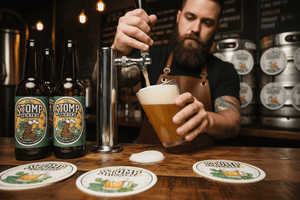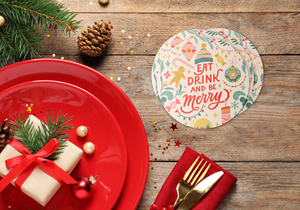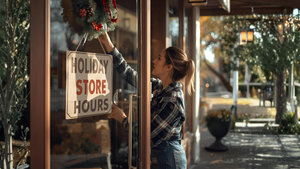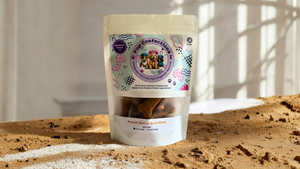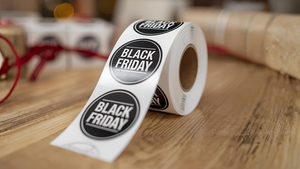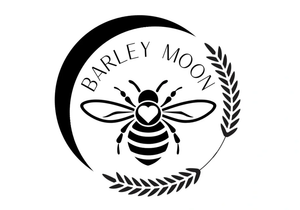The Evolution of Cannabis Packaging and Labeling

When the cannabis market expanded, the packaging and labeling requirements for the industry were much different than today. As federal and state regulations evolved, so too did the cannabis labeling and packaging requirements. For example, mylar bags were once the go-to for cannabis, but they’ve since been replaced with airtight containers.
Let’s dive into the evolution of cannabis labeling and packaging and how cannabis producers can design a compliant label for their products.
Cannabis Packaging and Labeling: A History
Here’s where cannabis legally stands in the US at the time of this writing:
- 36 out of 50 US states allow people to use medicinal cannabis with a prescription
- In 19 states, Washington DC and Guam, recreational cannabis is legal.
- The US Virgin Islands and 13 states have decriminalized the use of recreational cannabis.
These rapid legal changes surrounding cannabis use have created a boom in consumption. And by extension, it's also driven the growth in the cannabis production and packaging industries.
The industry is expected to have a CAGR of 24.3 percent from 2021 to 2026. In the packaging industry specifically, it’s legal, recreational cannabis that will be a huge driver in the market.
Popular Cannabis Products Over the Years

Cannabis flower, the most popular form of cannabis sold in the US, is typically enclosed in either jars or flexible packaging. But that wasn’t always the case. And since the market is rapidly expanding, that means cannabis product forms are as well.
As a result, you can purchase cannabis in various products — chocolates, drink mixes, gummies, cookies, pre-rolls, etc.
Cannabis packaging products and techniques are also a critical part of the industry due to the various federal, state, and municipal regulations. In most instances, the FDA regulates cannabis labeling and packaging.
Here’s how the different cannabis packaging and labeling products have evolved over the last few years.
Mylar Bags and Metal Cans

Initially, cannabis producers used one of the lowest-cost packaging options — mylar bags — to package their items.
Mylar bags are inexpensive and use a multi-layered PET construction on the inside, with aluminum foil as the main barrier. On the outside, mylar bags use PP or PE, so the products don’t touch the aluminum foil.
An additional benefit to using mylar bags, besides their cost-effectiveness, is that they offer multi-color printing capabilities too. However, soon after the boom in cannabis began, producers quickly turned their attention from mylar to metal cans flushed with nitrogen gas.
The benefit to this packaging option is that nitrogen gas, as opposed to oxygen, helps maintain the freshness of the products inside the can. Using oxygen to seal the can breaks down the cannabis more quickly.
But there’s an issue here as well. Once the metal can is opened, the cannabis flowers will deteriorate quickly.
So, these early packaging solutions are not as common now in the cannabis industry. In the quest to maintain freshness, the evolution of cannabis packaging took several twists and turns.
Child-resistant cannabis packaging

The FDA requires cannabis producers to follow child-resistant regulations for packaging. These requirements must be strictly adhered to ensure children’s safety, preventing them from accidentally opening and ingesting the packaging’s contents.
Many states that have legalized cannabis consumption also have their own sets of child-safety packaging rules. In addition, these products must go through extensive testing regimens to guarantee child resistance.
For example:
- Packaging must include tamper-resistant features.
- Explicit product labels must be on the packaging.
- Packaging products must undergo several tests, proving that children can't open the container after five minutes and access the items inside.
- Adults must also find the packaging somewhat challenging to open but still accessible.
- The packaging must be opaque and resealable.
While these are general child-seal of approval requirements, individual states may have other requirements cannabis packaging must meet.
Airtight Containers

When an industry booms, ancillary markets will emerge to support it. As such, the legalization of cannabis saw massive improvements in packaging as well. This is where airtight containers come in. Cannabis enthusiasts can thank the invention of the airtight container for the rapid evolution of this industry.
Earlier in the article, we mentioned how packaging cannabis in mylar bags negatively impacts freshness. Airtight containers have otherwise solved this conundrum.
However, while it’s true that other types of plastic packaging may offer greater convenience, they don’t extend the shelf life of the products inside like an airtight container. While an airtight container looks like a regular can, it uses nitrogen gas to seal it, allowing the cannabis flower to stay fresher longer.
Heat-Seal Foil Liners

A heat-seal foil liner helps to keep products fresher longer and offers a tamper-evident, airtight seal for safety purposes. Typically used in plastic or glass jars, the heat-seal foil liner essentially creates a welded seal. To open the jar, you have to destroy the liner. So, it lets you know that the product hasn’t been tampered with if the seal is intact.
Heat-seal foil liners can also take the form of a pull tab, which is incredibly common for food products. For edible cannabis packaging, pull tabs are frequently used to ensure freshness and tamper resistance.
For glass jars especially, heat-seal liners must undergo a more intensive manufacturing process. That’s because glass jars have a tendency to push the heat-seal liners off the jar lip over time.
Glass Jars

Even though glass cannabis jars require a more intensive manufacturing process to get an airtight seal, these packaging options are incredibly popular with cannabis producers and consumers alike.
Glass jars offer a premium, luxury feel. They can also be designed for a vintage look and easily meet the various FDA and state requirements for packaging.
For example, manufacturing child-resistant cannabis packaging requires producers to sell opaque packaging. To meet this requirement, a glass jar can be made with white opal glass. Or, you can create a custom label that wraps around the container and hides the contents inside.
Plastic Jars
For cannabis producers on a budget, plastic jars are a popular option. These are typically less expensive to use than glass containers and are often lighter, further reducing shipping and storing costs.
The most popular plastic container materials for cannabis are:
- Polyethylene terephthalate (PET)
- High-density polyethylene
- Polystyrene
- Polypropylene
Most manufacturers who opt for plastic containers go with PET, which is a material put through a process called stretch blow molding. It’s cost-effective, can efficiently meet FDA and state regulations, and is environmentally friendly while offering superior barrier capabilities.
Aesthetic Primary and Secondary Packaging Design
With great opportunity also comes great competition. For cannabis producers, setting themselves apart from their competitors is challenging. One primary tool in their arsenal is the packaging design itself.
Head to any dispensary or CBD shop, and you’ll see how packaging aesthetics have evolved. The cannabis industry has some of the most creative and eye-catching primary and secondary packaging designs to help them appeal to more customers and stand out on the dispensary shelves.
Primary Packaging Aesthetics

The primary packaging refers to any material that comes into direct contact with your cannabis product.
Today’s cannabis consumers demand primary packaging that’s functional and aesthetically appealing. As a result, many manufacturers are meeting this particular customer expectation.
But the aesthetics of secondary packaging is the next stop on the cannabis evolution train.
Secondary Packaging Aesthetics

Secondary packaging refers to the cannabis box or container that houses your product.
Focusing on making this part of your cannabis product visually appealing and functional can help you meet and exceed customer expectations. In addition, a unique, beautiful, yet functional design will also sharpen your competitive edge.
Automated Packaging
Efficiency in such a crowded marketplace is also a top priority for cannabis producers. Since the growth in this industry has been so explosive (with no signs of slowing), automated packaging capabilities have been a significant part of the cannabis revolution and evolution.
In the beginning, cannabis producers often filled their containers by hand. Why so old school? For one thing, the market wasn’t so crowded, so they could. But the cannabis flowers often varied in size and weight, and they also got damaged easily.
Manual packing allowed producers to accurately match the weight indicated on the label. However, the growth in the industry has made this way of packaging cannabis unsustainable. Nowadays, automated machine packaging is the way forward.
Initially, packaging cannabis with the same machinery used to automatically package food products wasn’t ideal. This process wasn’t gentle enough to handle the delicate cannabis buds. Therefore, automated packaging manufacturers began working closely with cannabis brands to create machines that would meet the budding industry’s specific needs.
Today’s cannabis producers can benefit significantly from this pitstop in the evolutionary journey of the cannabis industry. Automated packaging systems can accurately and gently weigh, sort, and package cannabis quickly.
Design Stunning Cannabis Labels and Packaging with Stomp
As a cannabis producer, you must offer well-packaged products to entice consumers to buy your items. A well-packaged cannabis product grabs attention and can also foster brand loyalty if the packaging material maintains quality and freshness.
Packaging and labeling cannabis products are now more critical than ever. A well-designed, aesthetically pleasing package will help your brand stand out on shelves and keep your product fresher longer.
Our support squad is ready to assist you with your printing questions. We can help you decide on the best material for your cannabis product. Contact us and get started today.
- Marketing Team

